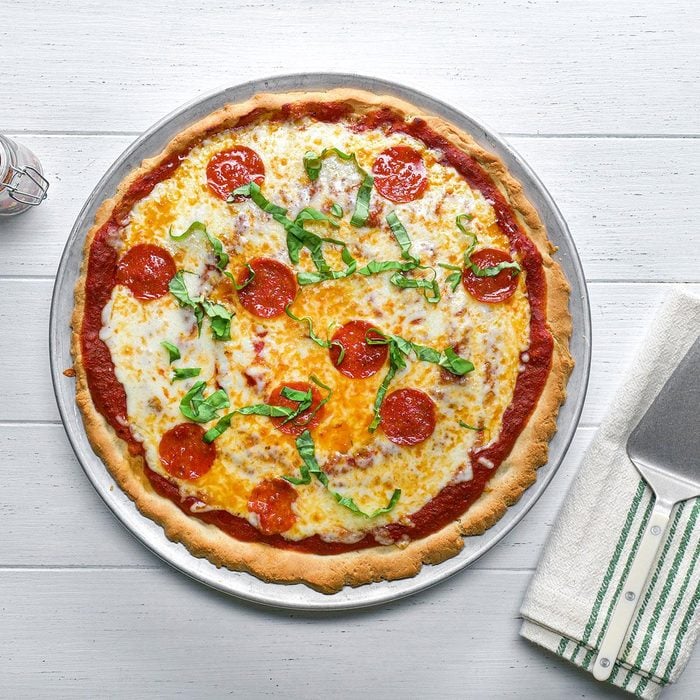Pizza is one of the most popular foods to enjoy for a variety of occasions, including birthday parties, office parties and simple weeknight dinners. But if you have a gluten intolerance and need to stick to gluten-free recipes, enjoying a traditional pizza isn’t easy. Luckily, with a gluten-free pizza crust, you can make it an easy tradition!
Both of the standard flours (all-purpose flour and double zero flour) for making yeasted homemade pizza dough contain gluten. Fortunately, you can seamlessly swap in gluten-free flour in their place. Once the dough has risen, it can be topped with all of your fave pizza toppings and cheeses, then baked to perfection. No gluten, no problem.
Ingredients for Gluten-Free Pizza Crust
- Gluten-free baking flour: Instead of regular flour, use gluten-free baking flour. This can be found at most grocery stores in the baking aisle. If the gluten-free flour does not have xanthan gum on the ingredients list, add 1 teaspoon xantham gum to the flour mixture while making the dough. If you’ve never picked up a bag, try one of our picks for the best gluten-free flour brands.
- Active dry yeast: This type of yeast is key to making the dough rise. It’s activated by warm water and feeds on the small amount of sugar in the dough to create carbon dioxide, ultimately making the dough rise for the perfect texture.
- Sugar: Sugar doesn’t add much sweetness or flavor for this dough recipe. Instead, it feeds the active yeast to allow for a proper rise in the dough.
- Baking powder: Just a small amount of baking powder helps to make this dough even fluffier while baking.
- Salt: Salt adds a touch of flavor to this pizza dough recipe. You could also choose to add other seasonings such as dried oregano.
- Egg: Egg plays a role in the texture of the dough—it helps make sure it’s nice and chewy and has a great rise. It also adds moisture.
Directions
Step 1: Make the dough
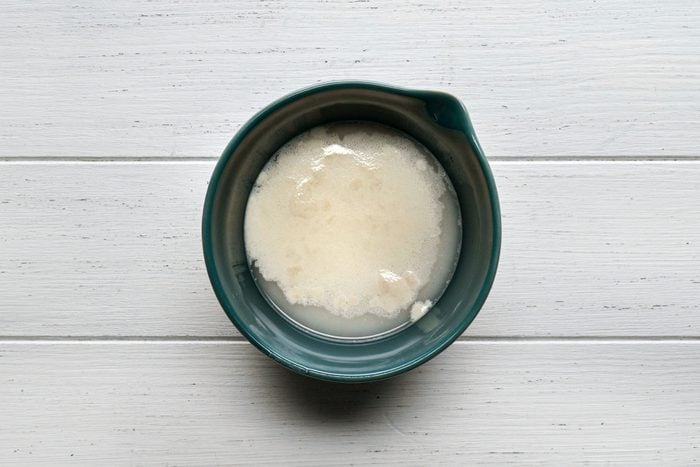
Preheat the oven to 425°F. In a small bowl, dissolve the yeast and sugar in warm water. In a large bowl, combine the flour, baking powder and salt. Mix the oil, egg, vinegar and the yeast mixture into the dry ingredients. Beat on medium speed until smooth. The dough will be sticky.
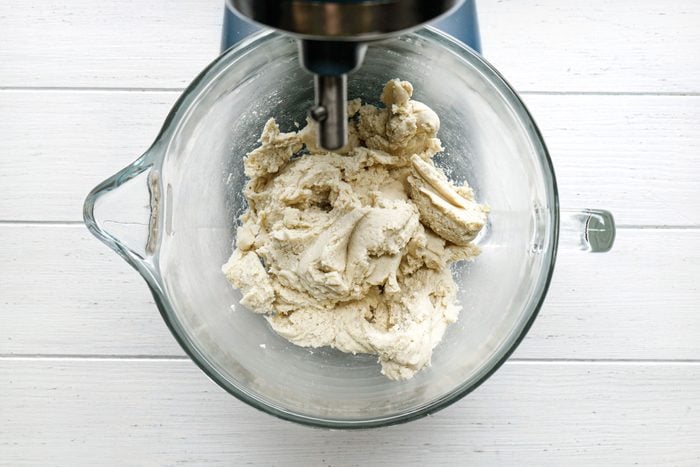
Editor’s Tip: Knowing how to proof yeast is key to successfully making pizza crust and other yeast bread recipes. Make sure the warm water temps between 110° and 115° before adding the active dry yeast.
Step 2: Proof the dough
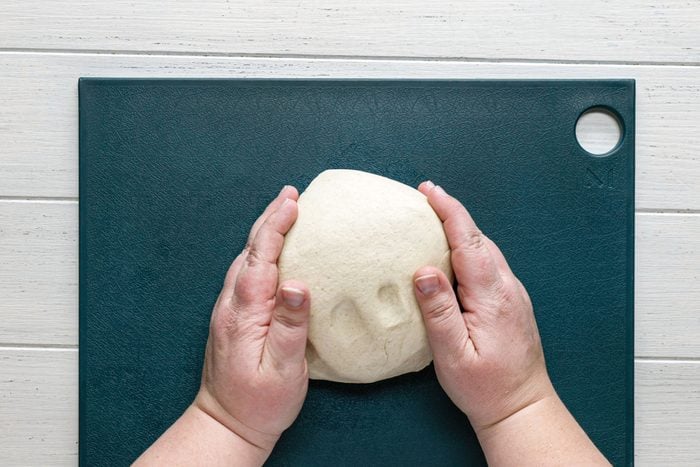
Gently shape the dough into a ball, and place it in a greased bowl, turning once to grease the top. Cover the bowl with a clean kitchen towel. Let the dough rise in a warm place until doubled, about one hour.
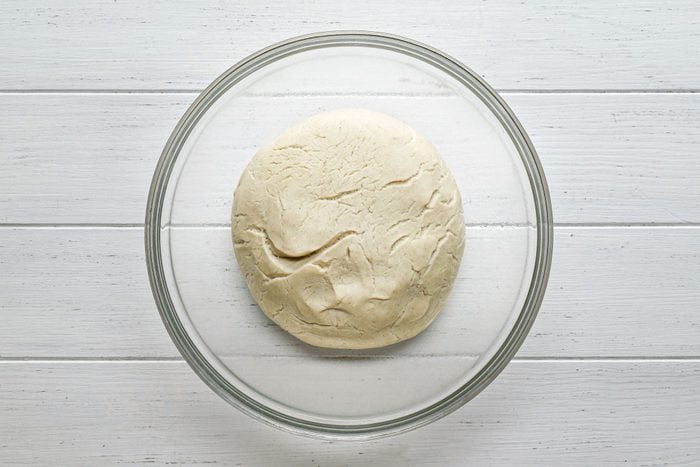
Step 3: Prebake the crust
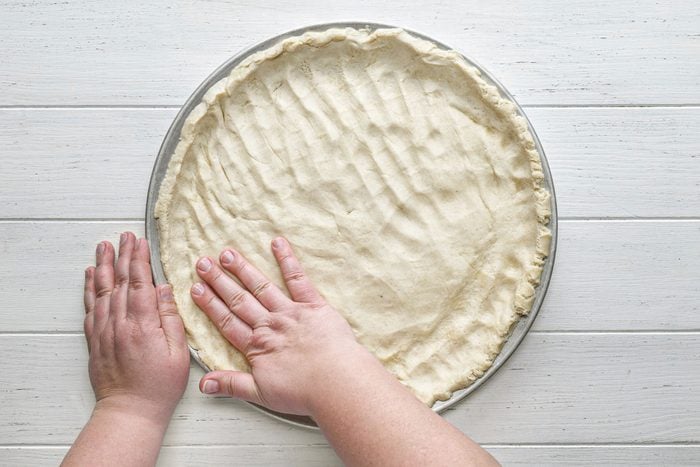
Once the dough has risen, grease a 14-inch pizza pan. Punch down the dough, and transfer it to the prepared pan. Press the dough to the edges. Bake the pizza crust until it’s lightly browned, 8 to 10 minutes.
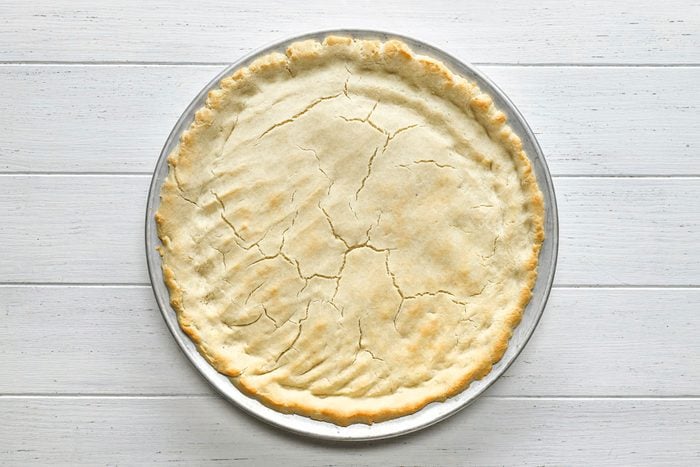
Step 4: Add your toppings
Add your desired pizza toppings. Bake the pizza for 10 to 12 minutes longer, until the toppings are heated through and the cheese has melted.
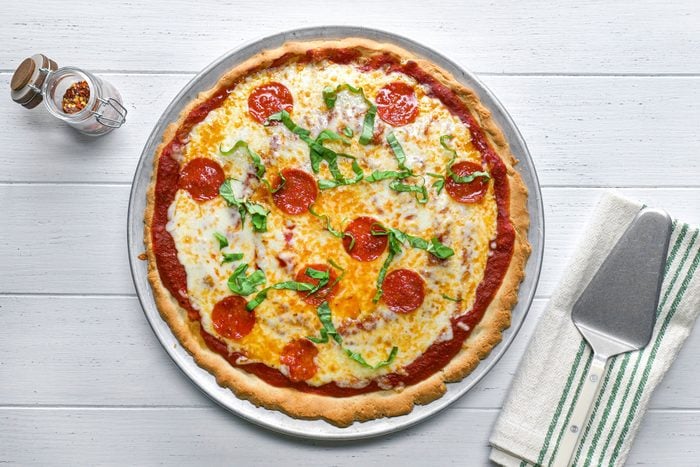
Gluten-Free Pizza Crust Variations
- Use another gluten-free flour: While this recipe calls for gluten-free flour as an even swap for all-purpose flour, you can choose to use almond flour in its place. The recipe still counts as a recipe that still qualifies as a gluten-free dinner.
- Make mini pizzas: Want little pizzas instead of one large gluten-free pizza crust? Divide the dough into two or four pieces, and bake them on smaller pizza pans or a lined baking sheet.
- Get creative with the sauce: While pizza sauce will always be a classic, there are so many other options for adding a tasty base to pizza. Try pesto, homemade Alfredo sauce, barbecue sauce or even ricotta cheese as your base.
How to Store Gluten-Free Pizza
Extra pizza makes for great leftovers. Store any slices in an airtight zip-top bag, or wrap them in storage wrap and foil. Store in the fridge for up to four days.
Can you make gluten-free pizza crust ahead of time?
Want to prep ahead for a pizza party, or just to have a few crusts on hand? Prep the dough as directed, and bake the crust for that initial cooking time of 8 to 10 minutes. Once the crust has cooled, store it in a zip-top bag or an airtight container in the fridge for up to one day.
Can you freeze gluten-free pizza crust?
You can bake this pizza crust ahead of time and freeze it to have on hand for a quick dinner. Make the dough, and parbake the crust according to the recipe. Once the crust has cooled, wrap it in a layer of storage wrap and a layer of aluminum foil or store in an airtight freezer bag. Keep the pizza crust in the freezer for up to two months. Thaw in the refrigerator before using.
Gluten-Free Pizza Crust Tips
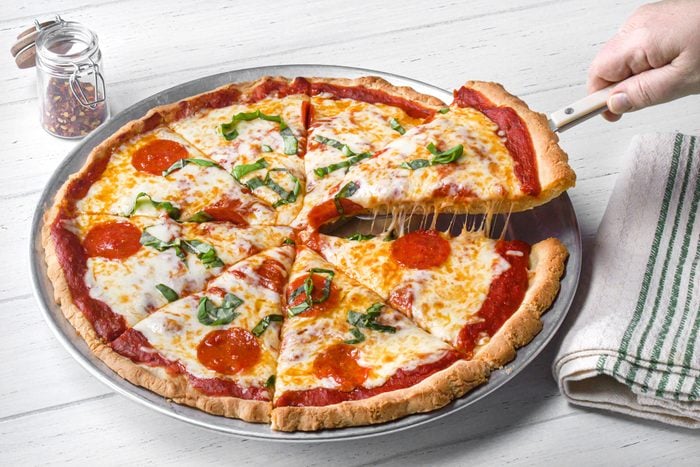
Can you use instant yeast instead of active dry yeast for gluten-free pizza crust?
Instant yeast can be used in place of active dry yeast in this pizza crust recipe. However, you’ll need to adjust the amount to use 25 percent less: Instead of using 1 tablespoon of active dry yeast, use 2-1/4 teaspoons of instant yeast. You’ll still need to use the warm water for hydration, but you can skip the proofing step in the warm water and simply add the instant yeast to the dry ingredients mixture.
Why is my gluten-free pizza crust not rising?
If it seems that the gluten-free pizza dough is not rising, it is most likely due to old or dead yeast. Active dry yeast is dormant when sold in stores and must be activated in warm water in order to do its job. If the yeast is old, it will not successfully perform its job during the rise. Test the yeast just before starting the recipe. If it doesn’t bubble and froth after 5 to 10 minutes, it’s worth heading to the store to pick up a new packet.
What can you do if the gluten-free pizza crust is too dry or crumbly?
Too much flour can cause pizza dough to be too dry or crumbly. Be sure to measure the water and flour in the dough correctly. Binding agents such as xanthan gum in the flour and egg will help to keep things moist as well. If it’s tough to work with the dough after it has been made and proofed, try wetting your hands with a small amount of water or olive oil to help make the process smoother.




















